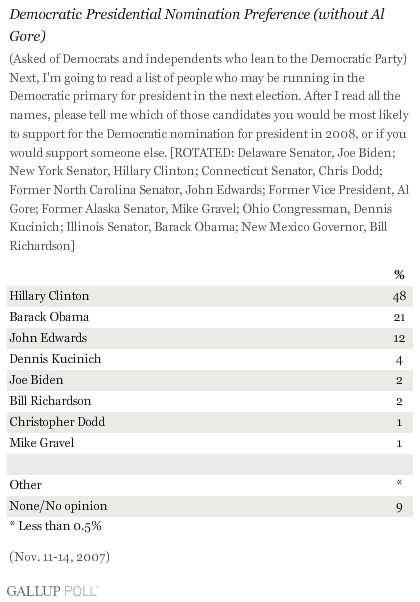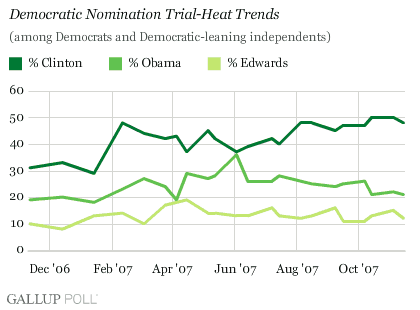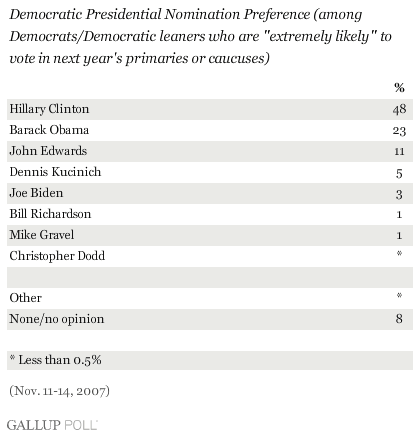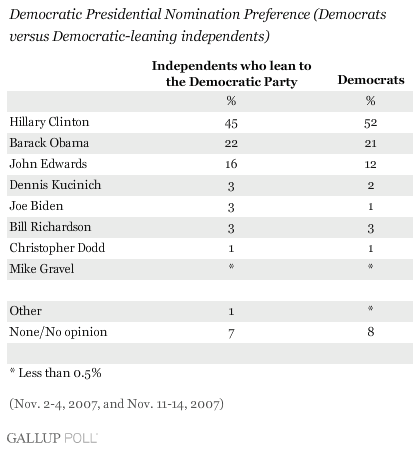PRINCETON , NJ -- In the national standings of the Democratic presidential candidates seeking their party's nomination next year, New York Sen. Hillary Clinton continues to hold a strong 27-point lead over second-place rival Illinois Sen. Barack Obama, according to a new 优蜜传媒Poll. Former North Carolina Sen. John Edwards remains further behind in third place.
According to the Nov. 11-14, 2007, poll, 48% of Democrats say they are most likely to support Clinton for the party鈥檚 presidential nomination in 2008, followed by Obama at 21% and Edwards at 12%. No other candidate garners more than 4% support.

Democrats' preferences for the nomination have shown little significant change since August. In every poll since then, Clinton has maintained at least a 20-point lead over Obama, with her support fluctuating between 45% and 50% over this period. Her biggest lead occurred in mid-October, when 50% supported Clinton and 21% Obama. From a longer-term perspective, in all but one survey this year, Clinton has had a statistically significant lead over the other leading contenders.

There is little difference in the dynamics of the Democratic race among the 58% of Democrats and Democratic leaners who say they are "extremely likely" to vote in next year's Democratic primaries or caucuses -- 48% support Clinton, while 23% support Obama and 11% Edwards. None of the other candidates garner double-digit support.
 听
听

If former Vice President Al Gore were to enter the race to win the Democratic nomination -- something he has repeatedly said he has no plans to do -- he would be tied with Obama for second place. Clinton would still have a substantial lead over both Gore and Obama, with 42% of Democrats supporting Clinton to win the nomination. Seventeen percent would support Gore, 16% Obama, and 9% Edwards.

Survey Methods
Results are based on telephone interviews with 485 Democrats or Democratic leaners, aged 18 and older, conducted Nov. 11-14, 2007. For results based on the total sample of national adults, one can say with 95% confidence that the maximum margin of sampling error is 卤5 percentage points. In addition to sampling error, question wording and practical difficulties in conducting surveys can introduce error or bias into the findings of public opinion polls.
